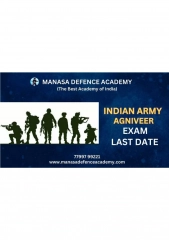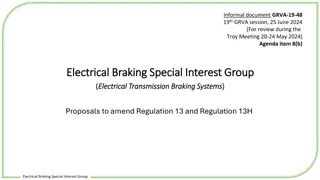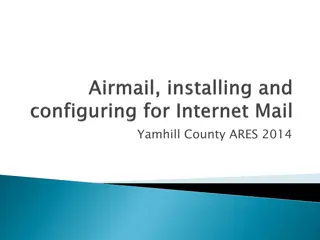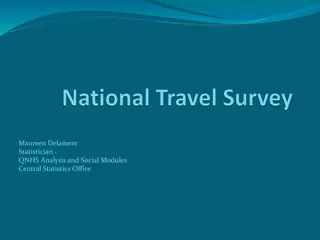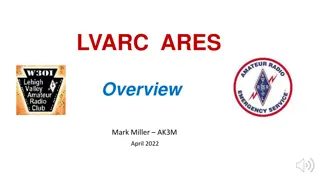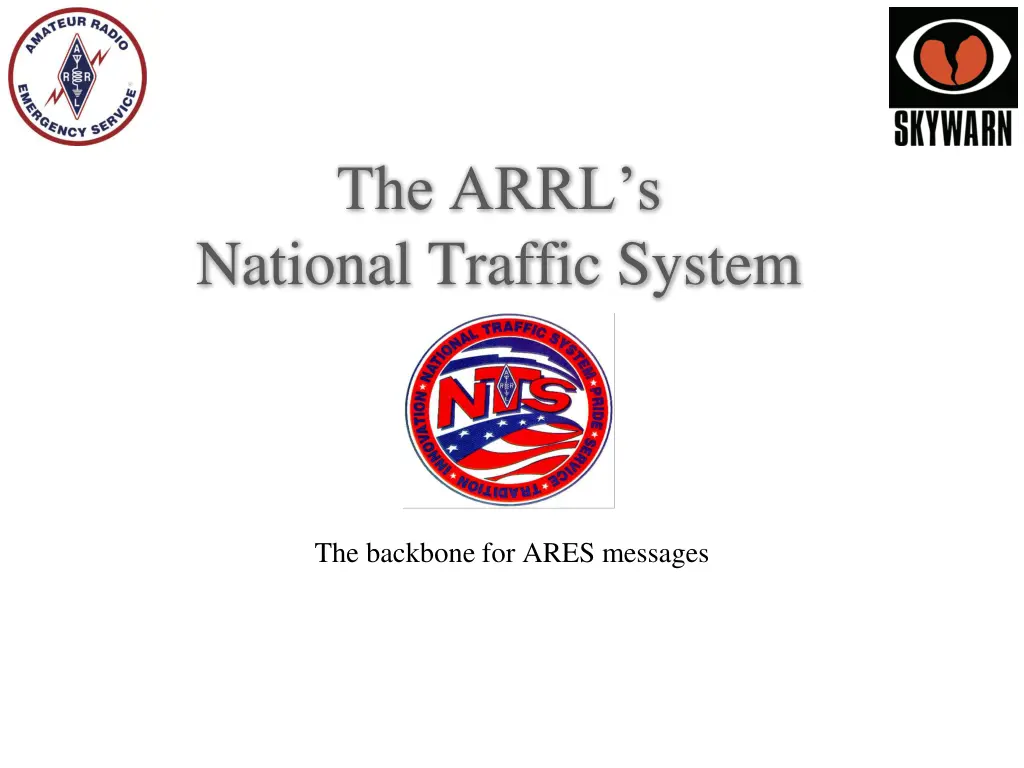
Emergency Communications Workshop - NTS & Radiogram Essentials
Explore the fundamentals of the ARRL National Traffic System and radiogram handling, including formal message structure, third-party traffic rules, and radiogram formats. Learn the importance of formal written messages and tactical communications in emergency situations. Discover the significance of precedence in radiogram preambles for effective communication during emergencies.
Download Presentation

Please find below an Image/Link to download the presentation.
The content on the website is provided AS IS for your information and personal use only. It may not be sold, licensed, or shared on other websites without obtaining consent from the author. If you encounter any issues during the download, it is possible that the publisher has removed the file from their server.
You are allowed to download the files provided on this website for personal or commercial use, subject to the condition that they are used lawfully. All files are the property of their respective owners.
The content on the website is provided AS IS for your information and personal use only. It may not be sold, licensed, or shared on other websites without obtaining consent from the author.
E N D
Presentation Transcript
The ARRLs National Traffic System The backbone for ARES messages
National Traffic System Handling Formal Messages Outline Formal Messages what and why How to format an NTS message ARRL Radiogram Numbers Handling Traffic on nets National Traffic System Structure Digital Message Handling Exercise to re-enforce learning Emergency Communications Workshop 2
Formal Written vs. Tactical Messages Most emergency traffic is tactical Formal written traffic is important for: A record of what has happened Ability to track Use when relays are required in order to keep messages intact Use of radiogram unless other formats such as ICS-213 or agency formats are required Emergency Communications Workshop 3 3
Third Party Traffic Rules Permissible Addressees of Third-Party Traffic U.S. Hams Anyone in the U.S.A. or territories Eligible Station control operators in other countries Anyone in a country with which US has a Third-Party Agreement But not to any country forbidden for 2-party communications (none at this time) Permissible contents in international radiograms Plain language Of a technical nature or of a personal character Unimportance (non-compete with state PTT s) Emergency Communications Workshop 4 4
Radiogram Format Emergency Communications Workshop 5 3/5/2011
Radiogram Contents Preamble Number (1, ) Precedence (R, W, P or EMERGENCY) Handling Instructions (HXA HXG) Station of Origin (your call sign if you originated it) Check (count of number of words/groups in body text) Place of Origin (where sent from) Date (Time/Date) Filed, Time zone Emergency Communications Workshop 6 6
Radiogram Preamble: Precedence Precedence is R, W, P or EMERGENCY Emergency [Never Abbreviated] life and death urgency, officially designated P - Priority other official or urgent / time sensitive W - Health and Welfare outgoing: advisory all is well etc. incoming: inquiry as to H&W of someone. R - Routine Emergency Communications Workshop 7 7
Radiogram Preamble: Handling Instructions Handling Instructions (optional,) HXA(#) Collect miles HXB# Cancel hours HXC Report TOD HXD Trace HXE get reply HXF# Hold until #date HXG Free delivery only Emergency Communications Workshop 8 8
Radiogram Contents The Rest Address as complete as possible Text (Body) Separate from Address with break (BT) Limit to 25 words or less, if possible. Use X for punctuation between sentences but not at end Signature Separate from Text with break (BT) Name Phone number suggested for reply addressing Operators Notes (Optional) Separate from Signature with break (BT) Emergency Communications Workshop 9 9
Special Contents Phone Number Format is figures 800 figures 555 figures 1212 (count = 3) Contrast to mixed group 800 dash 555 dash 1212 (count = 5) Extensions: letter group ext figures 437 (count is 2) Email address n1bda atsign arrl dot org count is 5 read as Amateur call [or mixed group] N1BDA atsign letter group a-r-r-l dot letter group o-r-g Web address ARES dot EMA dot ARRL dot ORG slash doc1 dot htm 11 words Omit http:// Read as letter group A-R-E-S dot letter group E-M-A dot letter group A-R-R-L dot letter group O-R-G slash mixed group d-o-c-1 dot letter group h-t-m Emergency Communications Workshop 10
ARRL Numbered Radiograms Which would you rather send (or receive) at either 13wpm or reading slow enough to write longhand? ARL 11 BT ARL FIFTY ONE Boston's First Night ARL SIXTY New Years Eve or 37 BT Greetings by Amateur radio. This message is sent as a free public service by ham radio operators at Boston's First Night. Am having a wonderful time. Wishing you the best of everything on New Year's Eve The Check starts with ARL to indicate ARL 11 for body above (rather than 37) Number is spelled out: ARL FIFTY ONE Emergency Communications Workshop 11 11
ARRL Numbered Radiograms (cont.) ARL ONE: Everyone safe here. Please don't worry. ARL TWO: Coming home as soon as possible. ARL THREE: Am in _____________________hospital. Receiving excellent care and recovering fine. ARL FOUR: Only slight property damage here. Do not be concerned about disaster reports. ARL SEVEN: Please reply by Amateur Radio through the amateur delivering this message. This is a free public service. [If reply Required, add Handling HXE ] ARL FIFTY SIX: Congratulations on your __________ a most worthy and deserved achievement. * ARL SIXTY FOUR: Arrived safely at ______________. ARL SIXTY FIVE: Arriving _____on ____. Please arrange to meet me there. ARL SIXTY NINE: Welcome to the ____________________. We are glad to have you with us and hope you will enjoy the fun and fellowship of the organization 12 Emergency Communications Workshop 12
ARRL Numbered Radiograms (cont.) ARL SIXTY: Wishing you the best of everything on ______________.* ARL SIXTY ONE: Wishing you a very Merry Christmas, and a Happy New Year. ARL SIXTY TWO: Greetings and best wishes to you, for a pleasant _____ holiday season. [ follow with X for no blank filler] ARL FORTY SIX: Greetings on your Birthday and best wishes for many more to come. ARL FIFTY TWO: Really enjoyed being with you. Looking forward to getting together again. ARL FIFTY THREE: Received your __. It's appreciated; many thanks. Emergency Communications Workshop 13 13
NTS Instructor Assisted Exercise Betty M Public wants to send a message to John Q Public on when she will be arriving to meet up with her husband. The text she wants to write is Arriving 7 PM Dec 24. Looking forward to seeing you soon. Love, Betty M Public Let s take a look at how the message header is formatted and how the text affects important items such as the check in the message header and review some of the references discussed in this presentation. Emergency Communications Workshop 14 14
Handling Traffic on Nets Follow Net Control Station (NCS) instructions (Simon says) When called to do so: Check in (with/without) list any traffic you have claim traffic you can deliver give/take (on or off frequency) clear Be precise; Avoid banter; spell as needed but no more, always using ITU phonetics Emergency Communications Workshop 15 15
Pro-Words Figure single numeral follows Figures several numerals follow Letter Group usually an abbreviation (EOC) Mixed Group letters and numerals (12A) Amateur Call special type of mixed group I Spell phonetic spelling follows I Say Again repeat of previous word Emergency Communications Workshop 16 16
Pro-Words (2) Correction I m going to correct something End end of message More additional message(s) follow No more no additional messages Say Again request from recipient to repeat Word after Word before All after All before Between Emergency Communications Workshop 17 17
If Check Doesnt Match Clarify special items, e.g., email address is 5 words Read message at reading speed stopping after every 5 words so recipients can identify where count is off or read every fifth word Note discrepancy in count in optional Operator s Notes Emergency Communications Workshop 18 18
Important Hint Problem: Reading the message too fast when sending is the primary error stations make. If you get many requests for fills or count clarifications, you are speaking too fast. Solution: Physically trace each letter as you send the message. Emergency Communications Workshop 19 19
Radiogram: Properly Serviced For a message to be properly serviced and thus traceable, record how it traveled. This may be in your traffic log or on an actual Radiogram form for each message. Received from another station For all messages except those originated, record Received From: Station, date, time received from. If relaying to another station Sent To: Station, date, time relayed If delivering hard-copy to addressee, Received At: Your call, phone, name address Send Reply to sender or Service message to Originator Emergency Communications Workshop 20 20
IMPORTANT Goal is to get the message through intact! From the ARRL NTS Methods and Practices Guidelines MPG. Do what the trained receiving operator expects and confusion and errors will be minimized Emergency Communications Workshop 21 21
NTS Net Schedule NTS Net Schedule and also where to send NTS messages via Packet. Check out the NTS web site at ema.arrl.org/national-traffic-system/ for updates on NTS and the net schedule. Net Time Frequency Mode Net Manager EM2MN 8:00 PM 145.23- PL: 88.5 FM Peter KC1HHO CM2MN 9:00 PM 146.97- PL: 114.8 FM John-KK1X HHTN 10:00 PM SuMWF MMRA System PL: 146.2 FM Joe-W1HAI CITN 7:30 PM TuThFSa 147.375- PL: 110.9 FM Mark-AC7RB MARIPN5:00 PM M-Sa 3.978 MHz LSB Ralph-N1LAH MARI 7:00 PM 3.565 MHz CW Marcia-KW1U MARISN8:30 PM MTuFSa 3.598 MHz CW Rob-K2MZ Emergency Communications Workshop 22
Traffic Nets Cont. Region Nets FRN 3.950 Khz SSB 2:45 & 4:15 PM (during Daylight Savings Time) 1RN 3.598 Khz CW 7:45 & 9:30 PM Digital KW1U MBO 24/7 VHF Packet 145.090 Mhz & HF Pactor (scanning multiple frequencies. See kw1u@arrl.net for further information) Winlink via kw1u@winlink.org 23
National Traffic System Structure HF CW, Digital, SSB HF CW, Digital, SSB HF CW & SSB, Digital 2m FM, Digital Emergency Communications Workshop 24
Digital Traffic Format ST zip code @ NTSxx (state code) Subject line: Destination city/town first 6 digits phone number Radiogram (header, address, text, signature) /EX (on line by itself followed by carriage return) Example: ST 01754 @ NTSMA MAYNARD MA 508 314 Radiogram /EX ST line of next message if sending multiple messages. Winlink traffic must be addressed to call sign @ winlink.org (kw1u@winlink.org) 25
Exercise to reinforce learning Write up a radiogram tonight to anyone whose phone # you have anywhere in the country (including to me, KW1U. If you have formatting questions after this session, email kw1u@arrl.net If you re feeling brave, check into an NTS net in the next two or three days and send it! Or if not so brave, send a radiogram via email to me kw1u@arrl.net. NTS Nets on VHF/UHF and HF are listed in this presentation and on the NTS web site at http://ema.arrl.org/national-traffic- system/ Emergency Communications Workshop 30 30
Resources ema.arrl.org/national-traffic-system/ Check NTS Resources under Quick Links Includes fillable Radiogram form, ITU Phonetics, etc. winlink.org arrl.org Methods and Practices Guidelines (MPG) From the ARRL NTS Methods and Practices Guidelines MPG - Do what the trained receiving operator expects and confusion and errors will be minimized 31

